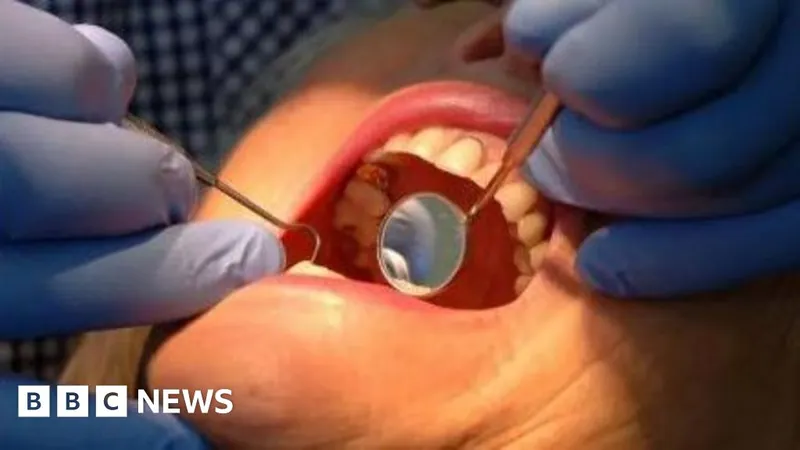
Breakthrough Study Unveils Secrets of the Deadly Parasite Behind Sleeping Sickness
2025-03-20
Author: John Tan
African Sleeping Sickness: An Overview
African sleeping sickness, a condition that afflicts millions, is caused by microscopic parasites transmitted by insects, specifically the notorious tsetse fly. This dangerous disease, alongside others like Chagas, poses significant health threats in various parts of the world.
Understanding the Parasite: *Trypanosoma brucei*
The culprits behind these infections are single-celled parasites, notably *Trypanosoma brucei* (T. brucei), which possesses a vital structure known as a flagellum. This whip-like appendage is not only crucial for the parasite’s movement but also plays a key role in its ability to infect hosts and adapt to different environments.
Groundbreaking Research from UCLA
In a groundbreaking study from the California NanoSystems Institute at UCLA, researchers have employed advanced atomic imaging techniques and artificial intelligence to create the most intricate 3D map of the T. brucei flagellum to date. Published in the esteemed journal *Science*, the study identified a remarkable 154 proteins that comprise the flagellum, including 40 that are specific to the parasite itself.
New Insights into Parasite Movement
By meticulously capturing the molecular motors responsible for the parasite's movement during transitional states, the research team devised a new model detailing how T. brucei swims through blood and bodily tissues. Understanding these mechanics unveils critical aspects of T. brucei's survival strategies, how it transmits disease, and sheds light on the pathogenesis involved in the illness it causes.
Expert Insights and Technology Behind the Study
"We've generated a comprehensive molecular blueprint of the flagellum's structural framework, elucidating how atomic-level movements are powered," said Z. Hong Zhou, a microbiology professor and founding director of UCLA’s Electron Imaging Center for Nanosystems. With the assistance of AI-driven structural analysis, the team uncovered unique proteins essential to the flagellum's design and operational functions.
Cryogenic-Electron Microscopy and AI
One of the key technologies behind this breakthrough is cryogenic-electron microscopy (cryoEM), which allows researchers to visualize frozen biological samples and reveal intricate details that are obscured by visible light. This data was further enhanced with AI tools capable of predicting the shapes of proteins based on their amino acid compositions. The results indicated that specific motor structures within the flagellum collaborate rhythmically, akin to how dragon boat rowers synchronize their strokes to navigate through water.
Evolutionary Implications and Potential Treatments
"Trypanosomes have developed specialized motion mechanisms to thrive in both the tsetse fly and human bloodstreams, making the flagellum a fundamental aspect of their biology," explained Kent Hill, another co-author of the study. Gaining insight into how these structural features facilitate movement also offers a glimpse into the fundamental relationships between parasites and their hosts.
Health Threat of Sleeping Sickness
The implications of these findings extend beyond immediate medical treatment. Sleeping sickness often begins with mild symptoms such as fever, headaches, joint pain, and itching but can escalate significantly if left untreated, leading to severe neurological complications as the parasite infiltrates the central nervous system. The research could illuminate potential therapeutic targets that effectively eliminate T. brucei or prevent its transmission to humans, while also providing insights into other related infectious diseases.
Future Directions in Research
Moreover, by enhancing our understanding of this lesser-studied microbe, the research could also inform evolutionary biology and inspire engineering solutions that draw upon natural mechanisms.
Research Leadership and Support
This significant study was spearheaded by Xian Xia, who has transitioned from postdoctoral researcher to project scientist at UCLA, alongside a collaborative group of researchers. The project received support from the National Institutes of Health and the National Science Foundation, with crucial data collection conducted at the Electron Imaging Center.
Stay Tuned for More Findings
Stay updated as further findings in this area may pave the way for new interventions against not just sleeping sickness, but a range of infectious diseases caused by similar parasites.



 Brasil (PT)
Brasil (PT)
 Canada (EN)
Canada (EN)
 Chile (ES)
Chile (ES)
 Česko (CS)
Česko (CS)
 대한민국 (KO)
대한민국 (KO)
 España (ES)
España (ES)
 France (FR)
France (FR)
 Hong Kong (EN)
Hong Kong (EN)
 Italia (IT)
Italia (IT)
 日本 (JA)
日本 (JA)
 Magyarország (HU)
Magyarország (HU)
 Norge (NO)
Norge (NO)
 Polska (PL)
Polska (PL)
 Schweiz (DE)
Schweiz (DE)
 Singapore (EN)
Singapore (EN)
 Sverige (SV)
Sverige (SV)
 Suomi (FI)
Suomi (FI)
 Türkiye (TR)
Türkiye (TR)
 الإمارات العربية المتحدة (AR)
الإمارات العربية المتحدة (AR)